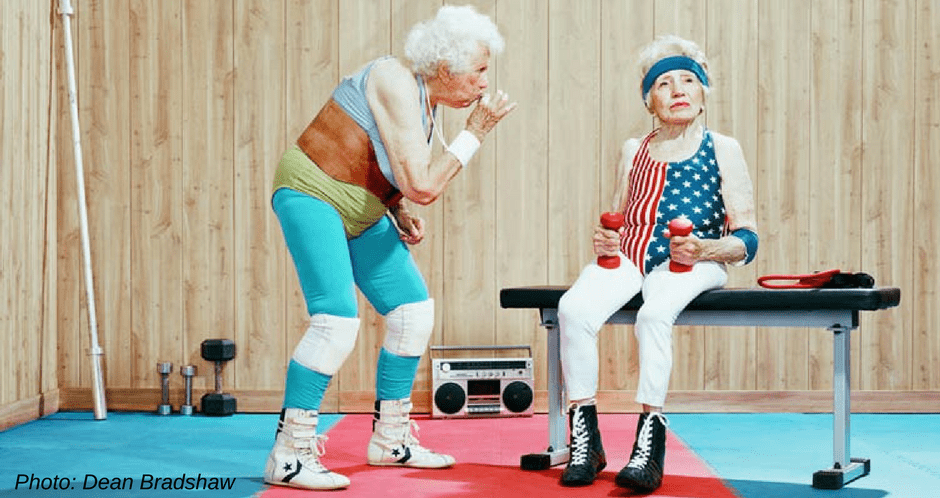
Older people, as with other age groups, need to discern a reason for participating in physical activity. Public health campaigns have reached the ears of older people and they are aware of the health benefits of being physically active.
A gap remains between knowledge and behaviour: the Australian Health Survey data show that less than half the older population are sufficiently active to achieve health benefits. A common barrier is fear of exacerbating existing health conditions or injuring oneself.
Fortunately there are many trained professionals who can assist older people in choosing safe activities and provide trustworthy supervision and encouragement to maintain physical activity behaviour that meets their needs. A second barrier cited is thinking one is ‘too old’ to benefit from being physically active. To counter this, the first of the Physical Activity
Recommendations for Older Australians states:
‘Older people should do some form of physical activity, no matter what their age, weight, health problems or abilities’.
Research shows that people are more likely to become – and stay- physically active if they can incorporate physical activity into their daily routine, hence Recommendation 2:
‘Older people should be active every day in as many ways as possible, doing a range of physical activities that incorporate fitness, strength, balance and flexibility’.
The frequency and intensity of activity is similar to that recommended for other adults:
‘Older people should accumulate at least 30 minutes of moderate intensity physical activity on most, preferably all, days’
Perhaps older people are a more heterogeneous group than any other section of our society, encapsulating members of different generations and a wide range of functional capacities, with both acute and chronic health conditions. Therefore engagement needs to be tailored to the individual and activities modified as people’s capabilities change over time:
‘Older people who have stopped physical activity, or who are starting a new physical activity, should start at a level that is easily manageable and gradually build up the amount, type and frequency of activity. Older people who have enjoyed a lifetime of vigorous physical activity should continue to participate at this level in a manner suited to their capability into later life, provided recommended safety procedures and guidelines are adhered to’
Let’s return to why older people might decide to become physically active. Often it is for health reasons, to deal with the negative impact of health conditions and to maintain independence. Missing from the formal recommendations is an emphasis on ‘fun’, yet anecdotal and scientific evidence demonstrates that people are likely to relapse from voluntary activities that have limited appeal.
People are more likely to continue to engage if they perceive a benefit. A particular program may lose its appeal if the person no longer enjoys it or doesn’t feel any healthier. The phrase ‘variety is the spice of life’ applies in this context. Whilst staying in the same exercise class may help in forging friendships with other members, these social health benefits may be better nourished in another setting. Changing to a different exercise program every now and again provides the opportunity to extend the health gains from physical activity. The development of new skills may also increase self-esteem.
If we want to engage older people in physical activity, then a few external barriers need to be removed. Cultural environments influence behaviour: society should view physical activity in older people as ‘normal’ and be encouraged by ‘significant others’ in the older person’s life. Activity requires individualising: ‘gentle exercise’ may a useful start point for frail, sedentary individuals, but as a blanket approach is going to have limited impact, not least by putting people off with its paternalistic overtones.
Finally, we have a lot to learn from the marketing experts. How successfully we have been sold mobile phones! Not everyone yearns to ‘exercise’: programs that sell a range of benefits to their market are more likely to achieve engagement. Older people can be reminded that physical activity can enable them to be independent and continue doing the things they like, with their family and friends. Unlike mobile phones, some forms of physical activity are free and can be undertaken even in areas where there’s no coverage.